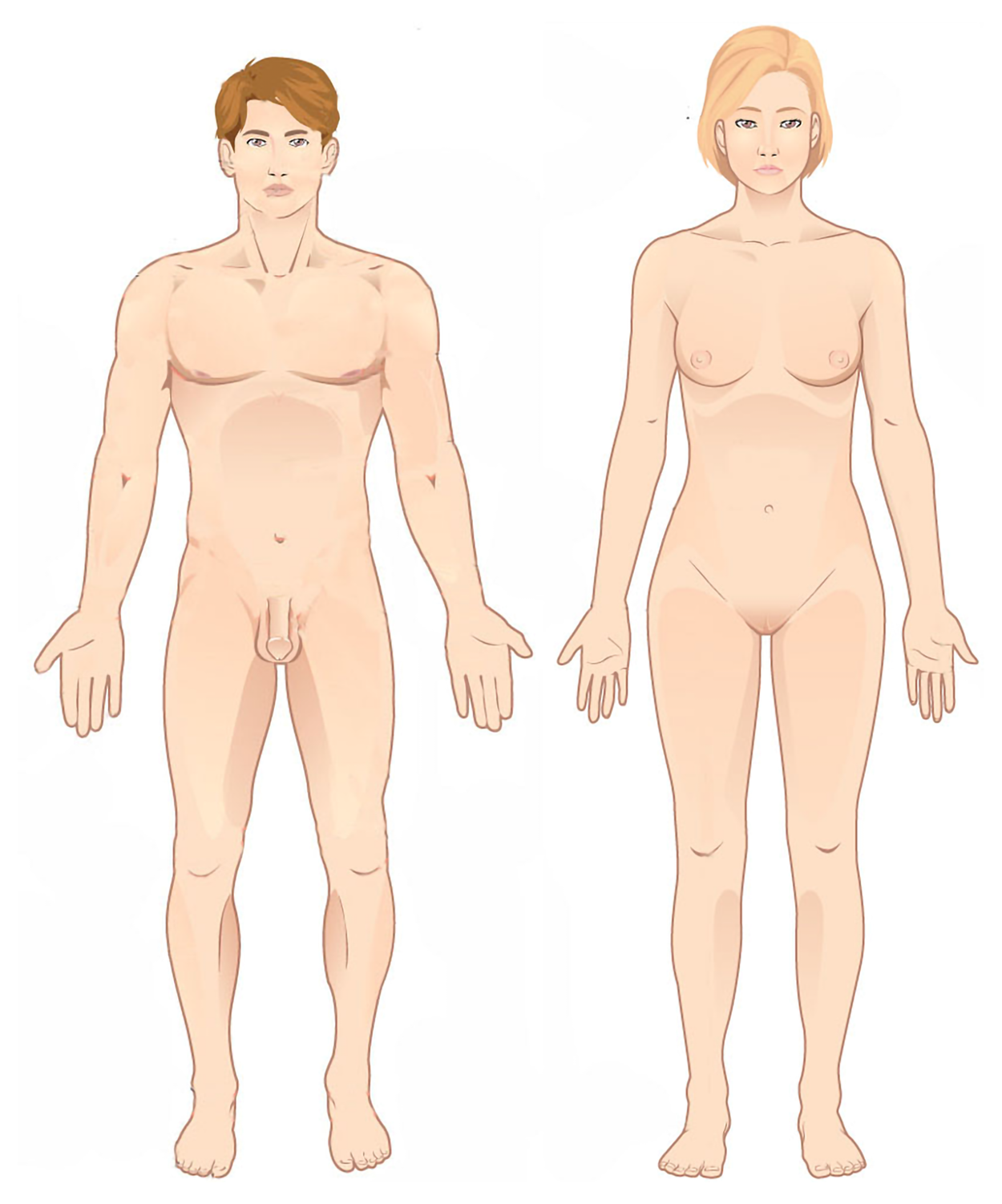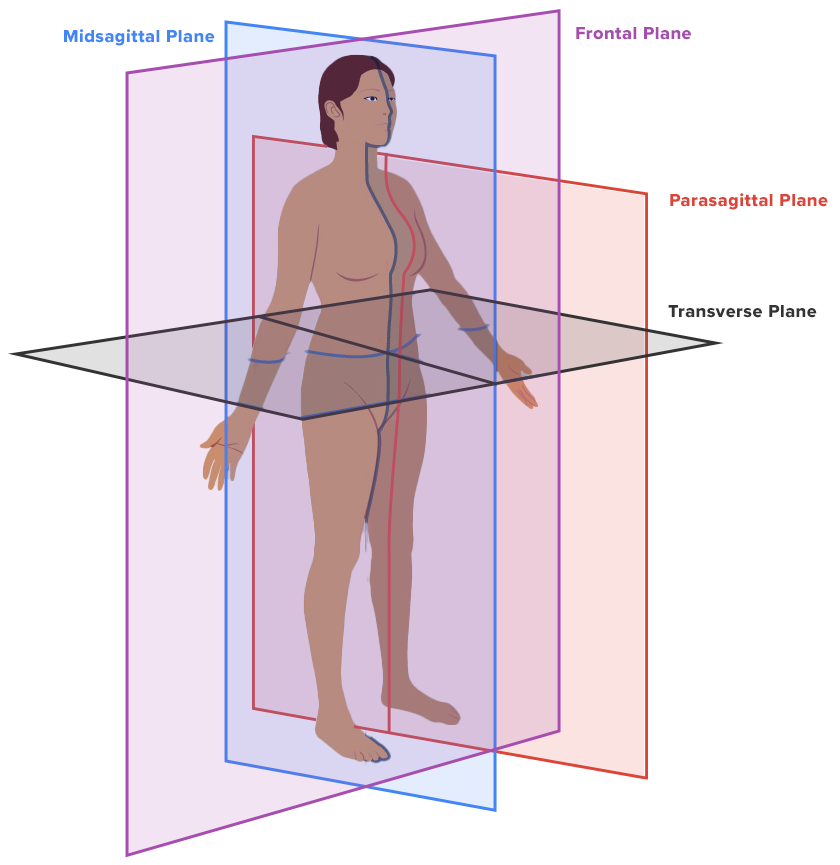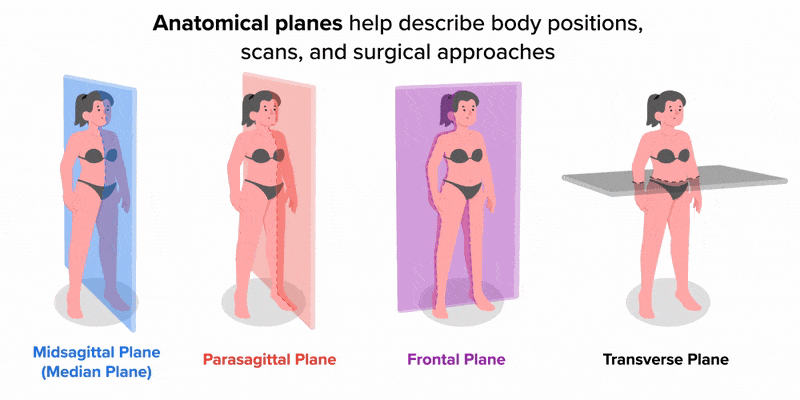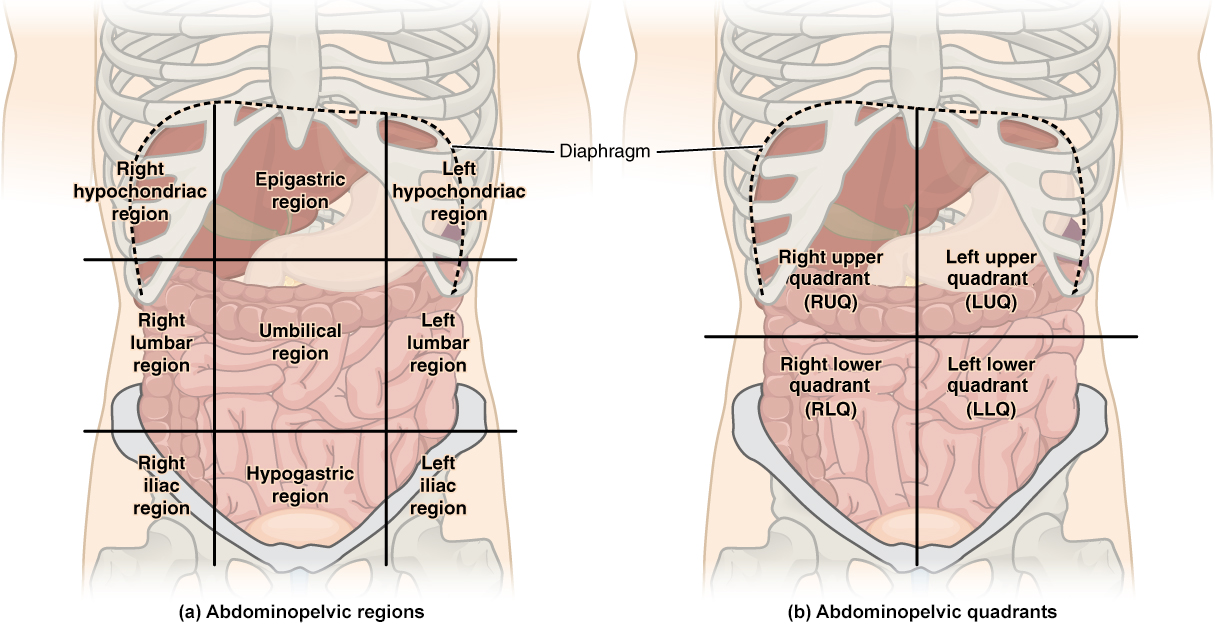In this lesson, you will learn about anatomical positions, body planes, and body quadrants. This terminology is very important for communicating about where something is located on a patient’s body or how a scan should be performed, for example. First, you will learn about anatomical position. Then, you will learn about planes used to divide the body into sections. Finally, you will learn about ways that the body is divided into quadrants and regions. These terms are used to describe locations, so they will come in useful in explaining the locations of injuries, pain, or procedures or in specifying requirements for imaging such as CT scans, MRIs, and X-rays. Specifically, this lesson will cover:
1. Anatomical Position
To begin your survey of body planes, positions, and directions, it is important to understand basic anatomical position. Standard anatomical position is the standard reference position used in medical terminology.
In anatomical position, a person is standing upright and facing forward (an anterior view). The person has their arms at the sides with their palms facing forward, toward the viewer. Additionally, the person holds their feet slightly apart with their toes facing forward.
Being familiar with anatomical position lets you understand a universal point of reference for medical professionals. It helps ensure consistent descriptions of body positions and reduces miscommunication in medical documentation.
You can see the standard anatomical position in the figure below.

2. Anatomical Planes
Anatomical planes are imaginary flat surfaces used to divide the body for study and medical imaging. Medical imaging, such as CT scans, obtains images of an individual’s body or an organ in sections. A section is a two-dimensional surface of a three-dimensional structure that has been virtually cut. In order for scans to be correctly interpreted, the viewer must understand the plane along which the section was made. A plane is an imaginary two-dimensional surface that passes through the body.

As the above image shows, the three anatomical planes commonly used in the medical field are sagittal, frontal, and transverse planes.
- A sagittal plane divides a body into left and right halves.
- A frontal (coronal) plane divides a body into anterior (front) and posterior (back) parts.
- A transverse (horizontal) plane divides a body into upper and lower parts.
There are multiple parts of sagittal planes.
- A midsagittal (median) plane divides a body into equal left and right halves.
- A parasagittal plane divides a body into unequal left and right parts.

Some planes are at oblique angles. An oblique (diagonal) plane cuts the body into diagonal sections. These are cuts made at an angle between the sagittal, frontal, or transverse planes.
-
Now let’s try using these terms.
3. Body Quadrants and Regions
Finally, it is important to know the body quadrants and regions. These are clinical reference points. They are helpful for locating pain, organ placement, and disease symptoms. They are used in abdominal exams, surgical procedures, and diagnostic imaging.

The four abdominal quadrants are described below and shown in the figure above.
-
Right Upper Quadrant (RUQ) – Contains the liver, gallbladder, right kidney.
-
Left Upper Quadrant (LUQ) – Contains the stomach, spleen, left kidney.
-
Right Lower Quadrant (RLQ) – Contains the appendix, right ovary, part of the intestines.
-
Left Lower Quadrant (LLQ) – Contains the left ovary, intestines, part of the bladder.
Sometimes much more detail is needed than the four abdominal quadrants. There are also terms to describe nine abdominal regions as follows.
-
Epigastric Region – Upper central area (stomach, liver, pancreas).
-
Right Hypochondriac Region – Upper right (liver, gallbladder).
-
Left Hypochondriac Region – Upper left (stomach, spleen).
-
Umbilical Region – Center (small intestine, large intestine).
-
Right Lumbar Region – Middle right (kidney, intestines).
-
Left Lumbar Region – Middle left (kidney, intestines).
-
Hypogastric (Pubic) Region – Lower center (bladder, reproductive organs).
-
Right Iliac (Inguinal) Region – Lower right (appendix, intestines).
-
Left Iliac (Inguinal) Region – Lower left (intestines, sigmoid colon).
Review all of these regions in the figure above to see their locations clearly.
-
Now let’s try using these terms.
In this lesson, you learned about body positions and regions. After learning to understand anatomical position and its importance, you reviewed anatomical planes that will help you describe different views of the body. Finally, you learned about the body quadrants and regions. These terms are extremely important in describing the location of patient complaints and procedures. They are also very valuable for describing how a patient should be positioned for scans to make sure that the right images are obtained. These are terms that you will use regularly in medical terminology and in healthcare settings.



